
Last week Leeds-based muso, Gary Stewart asked me along to The Brudenell Social Club to photograph his ‘Year And A Day’ EP launch.

I thought it’d be a great opportunity to test my new camera body, the Canon 5DmkIII, to see how it handled a low light gig scenario – especially considering that, apart from the dim red light of Oporto’s, The Brudenell has always been a bit of a nightmare venue to photograph gigs at at, with a few old spotlights rarely buzzing bright or pointing in the right direction!
Warning: this blog is gonna be a semi-geeky one, interspersed with highlights from the night. I’ll posting a more in-depth blog this week dedicated to how I’ve found the 5DmkIII in wedding & general use soon, but was interested to see how its redesign would react under gig conditions.

Gary had arranged support from infamous one man blues machine Jonny (the) Firth, who’s been away from the music scene for a while, now back with his ramshackle miscreants, AKA: ‘The Broken Bones Orchestra’; featuring sirens Rosie Doonan & Hayley Gaftarnick on backing vocals …

…and comedy poet Micky P. Kerr lending bass support.

I was generally happy shooting gigs with my Canon 5DmkII, but felt a few features showed room for improvement; namely:
- Auto-focus: Generally rubbish at all points bar the central AF dot, the mkII always ended up being a focus > recompose type shooter.
- ISO: Generally a good performer up to around ISO1600 (& ok at ISO3200), fast aperture primes on a mkII offered fast shutter speeds in low light, though f2.8 lenses were often lucky to get speeds of 1/100th in dingy conditions, leading to motion blur & missing moments.
- FPS: the mkII could only shoot 3 frames per second; and even less when dragging slow shutter speeds.

This image of Johnny was shot at ISO128,000 at 1/320th of a second at f2.8 on the 70-200mm IS lens.
Which itself highlights how the major mkIII updates have revised all of the previously stated areas of concern, including:
- A completely revised AF system, with umpteen options to suit many different conditions
- The usual bump in ISO performance by a good few stops, now claiming to be able to shoot up to a silly 25,600ISO!
- FPS of 6 frames per second!

As a car speedo that says it’ll do 200, you’d be lucky to push more than 175 out of it, the highest ISO a camera claims to shoot at is rarely useable.
However, the ISO one stop down from the top are generally where performance starts to become passable. So while I was shooting the gig I tried a whole bunch of the higher ISOs and found ISO6400 & 12800 looked great and processed beautifully in Adobe Lightroom 4.
[ Note, all of the images in this post have passed through & been given a little love in Lightroom – so this isn’t a text of the camera’s raw output ]

Again, this image was shot at 12,800ISO at f2.8, which allowed for a shutter speed of 1/400th of a second!
That’s amazing really, being able to shoot that fast. The only downside of being able to blaze 6 of these a second is the filing later!
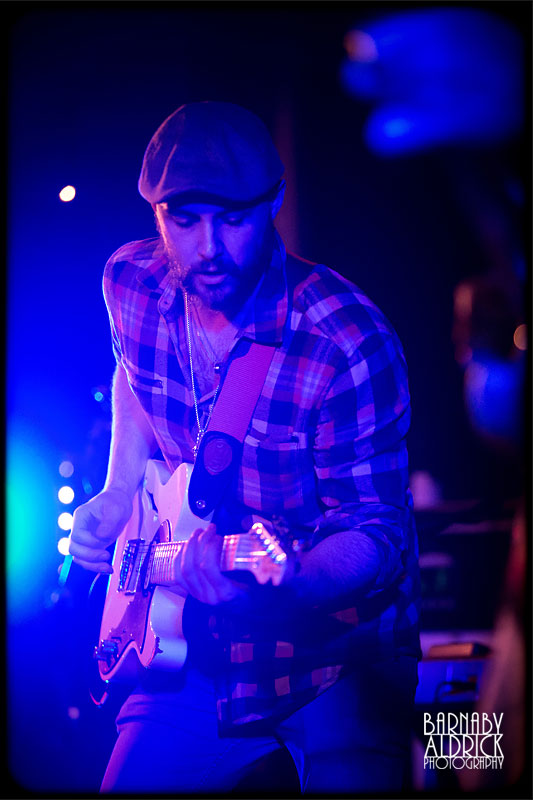
There were many reasons I wanted to upgrade to the mkIII, none being because it’d perform better at gigs, but primarily because:
- Dual memory card slots: Although I’ve an almost fail-safe backup workflow, having had a CF card actually fail on me recently I’ve wanted the contingency option to be able to shoot onto two cards at once. With the mkIII you can shoot RAWs to the 8GB CFs I’m constantly blazing through, while saving L-JPEGs to a 32GB SD card in slot 2. Should either card fail, the other holds a back up. The larger 1D series cameras always offered this, but it’s nice of Canon to listen to 5D shooters desire to have this filter down.
- Improved AF: As mentioned earlier, in my opinion the MkII may as well have only had one central AF point, as the others couldn’t be relied upon for critical focus – whether that be a kiss-the-bride moment or a musician-rocking-out. The mkIII’s newly revised Autofocus (again, adopted from it’s top end 1D cousin) is SO much better. It’s taken me a wedding, a few pre-wed portrait shoots, a gig and a good read of the 48-page PDF released by Canon here to figure it out (the release of the PDF demonstrates how overwhelming options are for users).
In the image above, again at a nice quick 320th, shows a solid lock of focus on Johnny & his guitar.

The next band up were the loud, hairy & Glaswegian Three Blind Wolves, laying out a country rock influenced by Neil Young, Creedence Clearwater Revival and even Led Zeppelin. They’ve apparently sold out venues across Scotland with their wild stage presence, transfixing harmonies and captivating performance and their mini-album ‘Sound of the Storm’ has met critical acclaim, with track Emily Rose bagging a well-deserved place on the July MOJO magazine cover CD and a coveted place on the BBC Introducing stage at T in the Park 2011.

I rather enjoyed their performance.

As usual, another gig didn’t pass without me photographing the shoes of a band member.

It was great to be able to crank up the ISO to the 6400 / 12800 mark to get fast enough shutter speeds to catch shots like this…

…and this…

…and this!
I like the light flaring in from the side – and think this was partly a consequence of some smeary fingerprints across the protective UV filter!

Slightly unfairly to this ‘low light’ test, someone had added blue LED lights to the stage, adding significantly more light than I was used to at the Brude.
But you never complain about extra light at a gig…

…cos they give you enough light to capture shots like this!
The above shot at 1/125th, and you can just see some motion blur on this singers left foot.
A feature I love on the mkIII (which I’ll go into more in my overarching review of the mkIII this week) is that you can dial in minimum and maximum Auto ISO & a minimum shutter speed that the camera won’t go below & shoot away in Av knowing you won’t get super noisy images with camera shake. I’ve taken to limiting the mkIII to ISO 6400 and to a 1/125th shutter speed when shooting wide-open in Av.
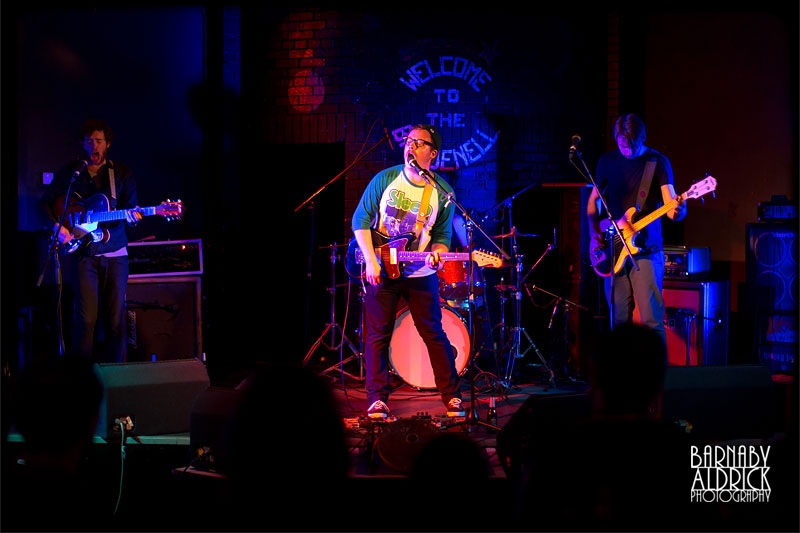
The mkII had a less sophisticated Auto ISO option, but there was no way of stopping it calling up the highest ISO in low light conditions; leading to ugly noise in images – so I rarely used it.
I love using the MkIII’s Auto ISO/min. shutter in Av mode and have dialled it in as a custom setting to use most of the time.
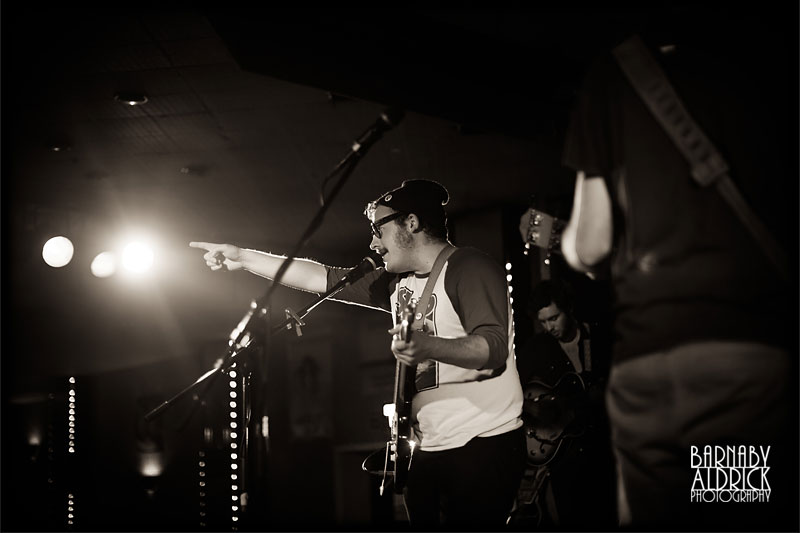
This was a lightning fast moment I managed to grab no doubt in part due to the clever new AF
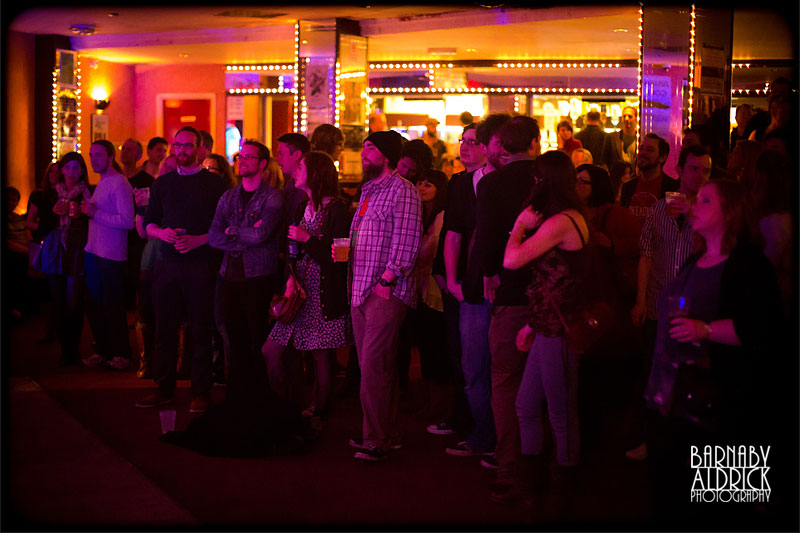
As Gary Stewart set up, I caught this image of the crowd, lit by reflected stage light alone at ISO25,600 at f1.2 / 1/100th.
They’re essentially in darkness and you can see how bright the actual bar looks behind (which is really pretty dark), so it shows the camera’s ability to see almost more than the naked eye.
![Gary Stewart Album Launch [Web-Ready] 037](https://www.barnabyaldrick.com//wp-content/uploads/2012/05/Gary-Stewart-Album-Launch-Web-Ready-037-1.jpg)
Some of the images of Gary on stage shot at ISO25,600, like this one above, used an aperture of f8! That is simply nuts for a natural light dingy gig shoot.
I’m no pixel peeper, and try to stay on the conservative side of high ISOs rather than go to town on noise reduction in post-production, but the quality of the ISO 25,600 was certainly passable! By no means fantastic, but as you can see on this web image above, it’s better than OK!

Mr Stewarts’ band in full swing, launching his new EP ‘Year & a Day’ in style. Many of Leeds’ finest helped the wee hobbit, including Hope & Social‘s Rich Huxley on the axe, Wilful Missing’s Sam Lawrence on random folky instrumentage, Ellen & The Escapades’ James Warrender on skins and filling in the bottom end, Adam Richards on double bass (of Spirit of John fame, but in too many other bands to list!)
The above was shot at ISO1250 – formerly my mkII ISO of choice for acceptable noise-level low light shooting, now clean as a whistle.

A wee snap of Gary’s setlist on the 85mm f1.8.
I rarely use the 85mm f1.8 lens (which is why I’ve never bumped it to the f1.2), but fancied bringing it to the gig for a bit of a closer prime vibe.

This is a good example of a nice clean gig capture in low light, with a nice splash of directional light from the LEDs on his face.
1/200th at f2.8 at ISO 3200 and you can hardly see any noise.

I’ve pushed and tweaked all these images a bit in Lightroom, but love the colours caught by the mkIII (this one at ISO6400)
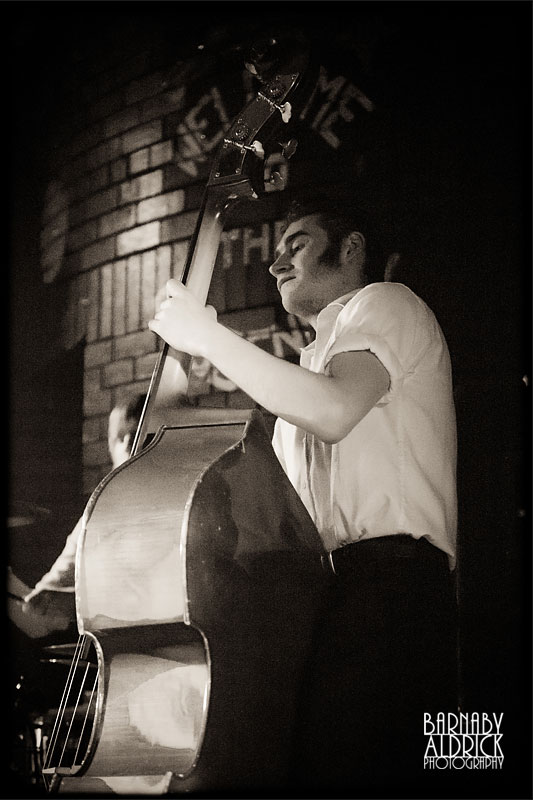
Adam always looks ace on d’bass, even at ISO12800.

Another nice moment of the gang going for it.
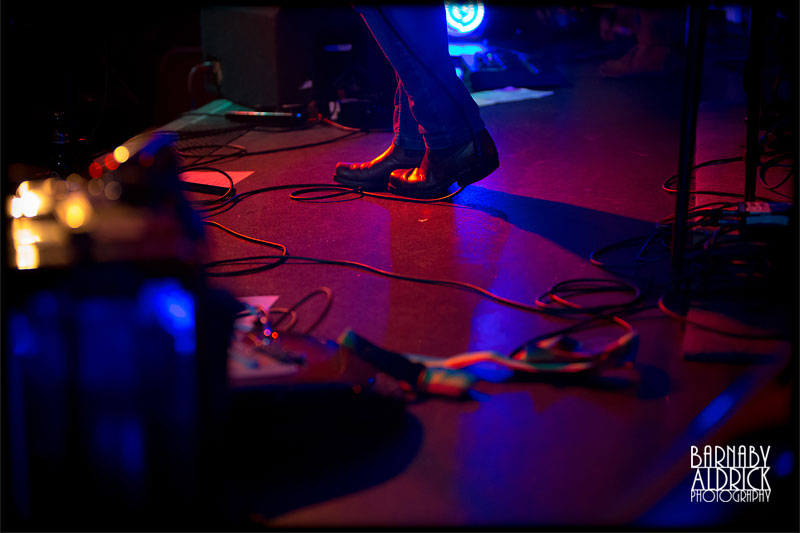
It’s all about the shoe shot…
I see Gary’s stepped up to cuban heels. I’ve got a pair just like this!

To the side of the stage, and in very little light at all were Sam’s guitars.
…nothing a bit of 12.8K couldn’t brighten up.

Sam’s face was generally in pretty bad light, so I used a Lightroom grad filter to lighten up his face.

You can’t really go wrong with a double bass shot.

I like this one of a bit of drummer / singer communication

The lovely Ellen, of Ellen & The Escapades joined Gary on stage for his track ‘Behind the Door’
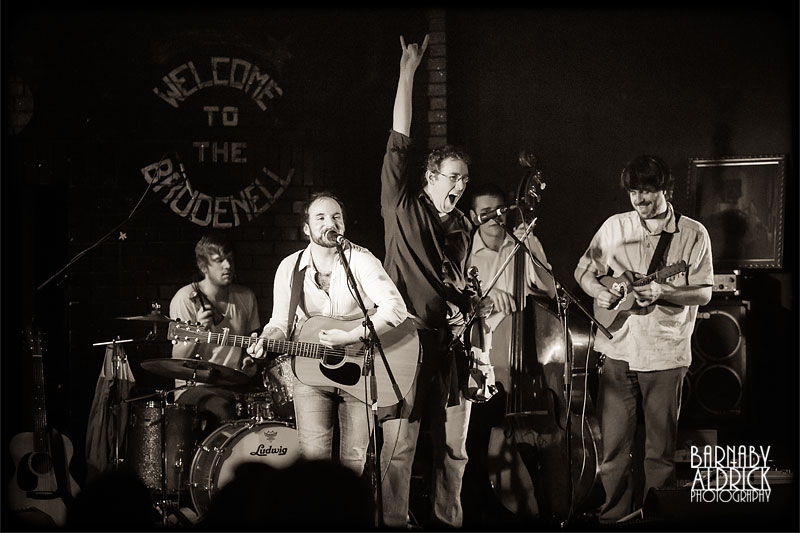 I watched as violinist hero Keiran O’Malley (of My Pet Brick and Joseph & David) was coxed away from chatting up a chick by the merch stand for a cheeky fiddle on one of Gary’s encores!
I watched as violinist hero Keiran O’Malley (of My Pet Brick and Joseph & David) was coxed away from chatting up a chick by the merch stand for a cheeky fiddle on one of Gary’s encores!
All in all, it was a fun, well-attended EP launch that did exactly what you’d expect from arguably Leeds’ hardest working musical hobbit.
We were treated to new renditions of the Gary Stewart classics we’ve heard so very many times before – which never sound far in vibe from Paul Simon leading Mumford & Sons round Scotland’s lonely hills – and we were even lucky enough to sample an exciting, all-new track!

Plus it was great to see Leeds’ usual suspects, moving and shaking their way around the crowds in various states of disarray!
So in short, on the geeky camera front, considering having already been impressed at the camera’s performance in day lit and common wedding scenarios, I was actually surprised by how surprised I was at how smartly the 5DmkIII performed in gig conditions. It felt far snappier in the hand, and brought in shutter speeds and f-stops previously unreachable in low-lit gig scenes, bringing a whole new game to the marginally slower-aperture zoom lenses.
Happy days!
